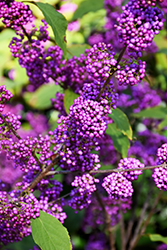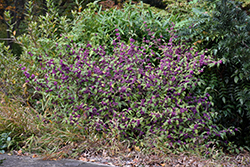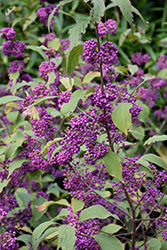Fri & Sat 8am - 8pm
Sun 8am - 7pm
Anytown, USA 12345
fax: 261.787.0463
e-mail: info@successgc.com


Plant Finder

Height: 6 feet
Spread: 6 feet
Sunlight:
![]()
![]()
Hardiness Zone: 5a
Description:
As its name implies, this selection produces a large crop of shiny violet-purple berries; pretty pink to white flowers in early summer; has a bushy habit of growth, and can be pruned back in spring, as it blooms on new wood
Ornamental Features
Heavy Berry Japanese Beautyberry is primarily grown for its highly ornamental fruit. It features an abundance of magnificent violet berries with purple overtones from late summer to late fall. It has pink trumpet-shaped flowers along the branches in early summer, which are interesting on close inspection. It has bluish-green deciduous foliage. The pointy leaves do not develop any appreciable fall color.
Landscape Attributes
Heavy Berry Japanese Beautyberry is a multi-stemmed deciduous shrub with a more or less rounded form. Its average texture blends into the landscape, but can be balanced by one or two finer or coarser trees or shrubs for an effective composition.
This shrub will require occasional maintenance and upkeep, and is best pruned in late winter once the threat of extreme cold has passed. It is a good choice for attracting birds to your yard. It has no significant negative characteristics.
Heavy Berry Japanese Beautyberry is recommended for the following landscape applications;
- Mass Planting
- General Garden Use
Planting & Growing
Heavy Berry Japanese Beautyberry will grow to be about 6 feet tall at maturity, with a spread of 6 feet. It tends to fill out right to the ground and therefore doesn't necessarily require facer plants in front, and is suitable for planting under power lines. It grows at a fast rate, and under ideal conditions can be expected to live for approximately 20 years.
This shrub does best in full sun to partial shade. It is very adaptable to both dry and moist locations, and should do just fine under average home landscape conditions. It is not particular as to soil type or pH. It is highly tolerant of urban pollution and will even thrive in inner city environments. This is a selected variety of a species not originally from North America.


